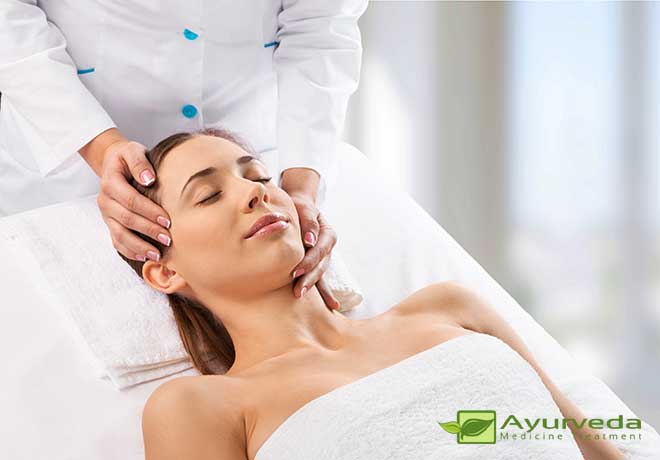
Paralysis of the face may be total or partial. In the latter case, the lower portion of the face is affected.
Why does paralysis take place?
Paralysis of any portion of the body including the face takes place when there the nerves fail (present in those parts) fail to function normally. This impairment in the normal functions of the nerves may happen due to local inflammation especially of the nerves.
The primary causes of such inflammation can be regular consumption of unwholesome meal and sudden exposure to cold, and failure of the body to adjust to the changes in the weather.
Facial paralysis happens when the nerves, right at the point where they come out from the skull, get compressed. Again this compression can be due to the aforementioned local inflammation.
Symptoms of facial paralysis
The common signs of facial paralysis setting are many. The first sign may be that the affected portion will become numb. The patient will have problems in moving that portion. The affected part of the face will become stiff.
Moreover, he/she will not be able to either close the eyes or even shed tears.
There can also be problems while having meals – liquid as well as hard.
Dietary Regimen
Instead of rice, the patient should regularly have wheat.
Cow’s milk is an ideal dietary item for such patients.
Similarly, the person should regularly have leafy vegetables.
What not to eat
Such people should not have cold and sour items. Mention of may be made of curd and even all forms of pulses.
Never have cold or chilled liquids including beer, ice-cream and beer as well as alcoholic drinks.
Other important points
Don’t allow such people to stay awake late into the night.
Never get exposed to rain or cold wind. They aggravate the conditions.
Always shield the face from extreme weather and climatic conditions.
Protect the eyes
Ensure that the patients take utmost care of their eyes, especially from the disease.
This point is especially significant due to the following situation:
More often than not, the patient (in extreme cases) may be unable to even close his eyes while sleeping. Hence there is every possibility of the eyes getting infected or foreign bodies like germs intruding into these sensitive organs.
Cure constipation first
It is of utmost importance that the patient should not be suffering from constipation. The medications referred to below are the most effective when a person is not constipated. So, the primary concern should be to address constipation at the earliest. Here’s one of the most effective Ayurvedic treatments to cure constipation.
Castor Oil
Castor oil should be regularly given to the patient as a purgative means.
Moreover, castor oil has several other therapeutic effects on the body. It has anti-inflammatory properties and is primarily effective against joints, bines and fibres.
Ayurvedic Treatments
Ayurveda prescribes the following medications and treatments for treating this typical condition. According to the Ayurvedic principles, facial paralysis is treated with a two-pronged strategy: internal and external.
The internal medications incorporate Dashamularishta and Vatagajankusha. Mentionably, the patient should also be given the external treatments. These include massaging with the Mahanarayana taila and hot fomentation.
Since facial paralysis, more often than not, is not painful, therefore many patients do not continue the medications once the symptoms or the condition ceases. However, these medications should be continued for at least three weeks even after the patient gets relief from facial paralysis. Mentionably, the residual paralysis conditions continue for the entire life. Continuance of the medications and the treatment during the post-paralysis phase ensures that the residual paralysis conditions do not recur.
DashamularishtaA
Dashamularishta tones up the nerves. It also has anti-inflammatory properties. Further, this medication has therapeutic effect on the nervous system.
The dose: One dosage consists of six teaspoonfuls mixed with equal quantity of water. This concoction should be consumed by the patient twice daily after meals.
Vatagajankusha
Vatagajankusha comes in the tablet (pill) form.
Preparation procedure: Grind two pills into powder; mix it with honey.
The dose: Thrice daily.
Mahanarayana taila
Mahanarayana taila (medicated oil) massage needs to be given to the entire affected portion of the face in the morning, in the evening as well as before retiring for the night.
Preparation procedure: Warm up the oil.
Usage mode: Massage the oil gently and slowly from a top-to-bottom process.
Important point : The patient should stay indoors after the massage. The point is to keep the massaged portion warm.
Hot fomentation
Hot fomentation is very effective in this condition.
Preparation procedure: Put two tablespoonfuls in a linen piece. Tie up the contents in the cotton cloth as a bolus. Heat the bolus by keeping it atop a dry frying pan. The bolus should be tolerably hot; one can test the heat with one’s fingers prior to applying it to the patient.
Usage mode: The hot fomentation should be applied to the facial nerve. This nerve is located below the ear lobule. The patient needs to be given the hot fomentation thrice daily – in the morning, evening and at night. The bolus application must be given for at least 30 minutes each time.
Important point : After the fomentation, the patient should keep the massaged portion warm with a woolen scarf or muffler.

Leave a Reply